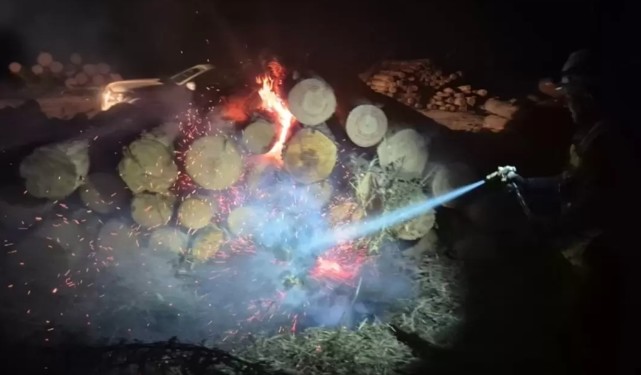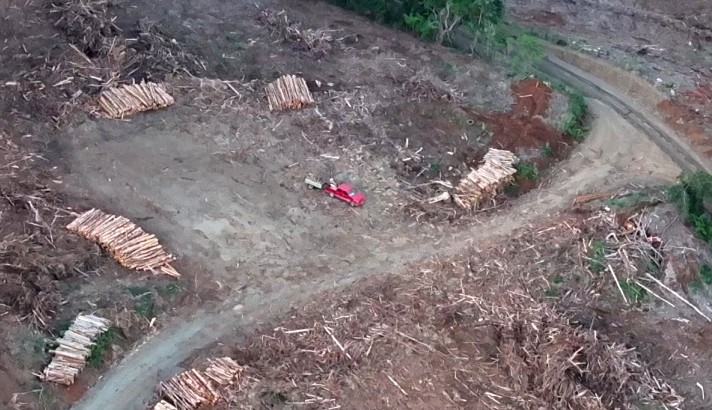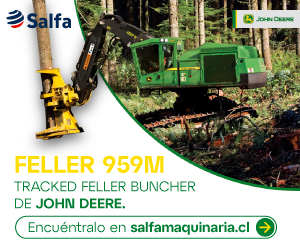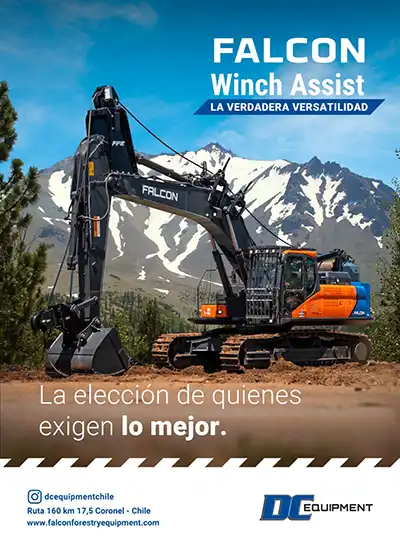Conaf Evaluates Wildfire Risk Zones to Work with Municipalities
Just months after the transfer of CONAF to the future National Forest Service (SERNAFOR) was approved, Rodrigo Illesca Rojas takes over as its new acting executive director amid a challenging scenario: the imminent start of wildfire season and the urgent need to strengthen prevention in urban-forest interface areas.
A forestry engineer with 25 years in the institution, Illesca visits the Biobío Region—one of the hardest hit by fires in the last decade—to meet with staff, review preparations, and explain ongoing institutional changes.
In this interview with Diario Concepción, he addressed legislative hurdles, the factor of intentionality, emergency response, and resource allocation for wildfire combat.
-What brings you to Biobío?
-We are touring all regions. The idea is to understand the reality of each area where we operate.
We will present to CONAF staff to explain what lies ahead with SERNAFOR—the transfer of the corporation approved last May 23. This will help ease their concerns by clarifying how we will work and our future direction.
-Some time ago, CONAF staff staged a work stoppage related to this transfer. Has that impasse been resolved?
-The issue at the time was a structural change in CONAF, aligned with its various departments and approaches. All of that was rolled back.
At one point, an Afforestation Department was created, and two other departments—Enforcement and Native Forests—were merged into one. But later, this was reversed, and the Enforcement Department resumed operating independently as it had been before the merger.
This was one of the institutional details tied to CONAF's functions, ensuring its binding role across different services, primarily through enforcement. But merging and losing the department name raised concerns.
The other issue is the uncertainty that always comes with transferring from one service to another. We want to make it clear that there will be no contractual changes.
-Considering Biobío has suffered particularly badly from wildfires in recent years, how do you project the start of a new season?
-Well, we no longer talk about a "season" because we have fires in July. What we do have are peaks, which generally start in September and last until May.
Based on our projections, we must understand that a fire can happen anytime, so we focus on prevention, burn supervision, and preparing communities and schools.
As for firefighting, we are already preparing aircraft tenders and reviewing profiles to select brigade members, who will start in August.
-Last August, high summer temperatures were already projected. I assume current preparations also depend on these climate forecasts?
-Exactly, and we are also conducting predictive analysis. However, we must acknowledge that climate change is real and here to stay.
Right now, we have rainfall conditions that, while not abundant, will generate grass—and that grass fuels fires.
Add to that the long dry spells we've had in summer... You leave the city, and many forest areas are dry. This prolonged drought has stressed vegetation, creating conditions where we remain vulnerable.
On the other hand, surveillance of the urban-rural interface has increased. We look at hills where there used to be forests and vegetation—now there are houses. Any reckless action can spark fires.
-How many local municipalities have reported identifying risk zones? I assume there’s a process?
-Actually, we are the ones who first identify risk zones.
-Is that process underway?
-Yes, and based on that, we tell municipalities: "Look, these are your risk zones, so you need to take special care."
-Are you concerned that key bills for urban-forest interface areas, crucial for wildfire prevention, are still stalled?
-Well, there’s currently a wildfire bill in progress, tied to the establishment of SERNAFOR, as it will grant us certain powers—like entering homes or properties with water sources for extraction.
Regarding the wildfire bill, I understand recent discussions have revived its progress. This is also an instruction from the Ministry of Agriculture—to push for its enactment during this legislative period.
-Every year, intentionality in fires is discussed, but concrete legal action is rare. Do you see this issue stalled? What progress is needed to raise public awareness of these crimes?
-I believe this comes down to shared responsibility. That said, many fires aren’t criminal acts but result from negligence—like using spark-generating tools carelessly.
As for intentionality, we aren’t the authority to determine it. The closest we have is an analysis and diagnostics unit, which helps us learn how to better fight fires. But Carabineros and the PDI handle investigations, with prosecution led by the Public Ministry.
-In terms of resources, is there more availability this year compared to last season for fighting wildfires?
-This season, we have the same resources for aircraft contracts—low-, medium-, and high-capacity helicopters, as well as tanker planes for water drops.
The resource concept is similar: AI-powered cameras and simulators. But we’re also emphasizing early detection and rapid resource deployment.
-The latest report was positive, with fewer fires and burned hectares. What’s the main reason: better weather or more efficient prevention and combat?
-For a couple of seasons, we’ve applied the "single strike" method. CONAF has agreements with CORMA, using cameras that alert us to fire locations. AI algorithms confirm vegetation fires, triggering immediate regional coordination to deploy all resources for rapid extinguishing.
Source:Diario Concepción

















